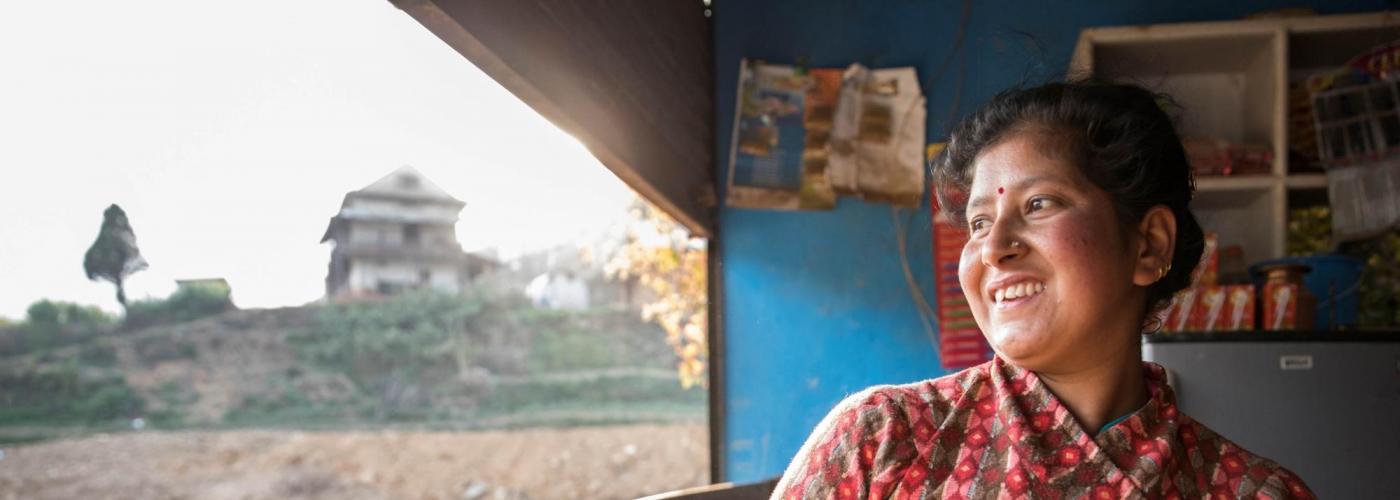Three Years Later: What Spurred Recovery Following Nepal’s Gorkha Earthquake?
Image

The monsoon rains fell without stop, seemingly indifferent to the trauma community members of Dhungkharka had just endured, as it pelted the crude and waterlogged temporary shelter they huddled beneath. Two weeks previous, late on the morning of April 25, 2015, a 7.8 magnitude earthquake rocked Dhungkharka and many of its neighbors.
The toll throughout Nepal was resounding: over 9,000 dead, more than 800,000 homes destroyed or badly damaged, and some 2.8 million people displaced.
Three years later, 29-year-old business owner, mother, and Dhungkharka resident Saraswoti Timilsina can still vividly recall the panic that gripped her — “It felt like we wouldn't live,” she says.
In the days following the earthquake, Saraswoti and her husband began the agonizing task of assessing the damages sustained by their home and small business. Wading through shards of broken glass and spilled and spoiled food, they salvaged what they could from their snack shop but were forced to throw out the rest. The family’s only source of income at the time, Saraswoti was acutely aware of the critical need to recover their livelihood somehow.
In an effort to understand what mattered most for households’ recovery in the aftermath of the disaster, Mercy Corps Nepal followed the same households in 26 earthquake-affected communities 10 weeks, one year, and two years after the 2015 earthquake.
The research shows that factors critical in helping households cope better just after a disaster may not be the same factors — or are themselves insufficient — to help households recover over time and ensure future resilience. Study findings revealed that timely emergency aid (within seven days) and informal savings helped households mitigate the worst effects of the earthquake in its immediate aftermath but did not influence long-term recovery trajectories. What mattered most for recovery one and two years after the earthquake was sustained increases in access to and use of formal loans and savings in an official financial institution, such as a member-run Savings and Credit Cooperative Organization (SACCO) or Micro-Finance Institution; household disaster risk reduction awareness; and bonding social capital — households’ ability to rely on their own caste for help.
Importantly, the greatest impact on recovery and wellbeing outcomes occurred when households were able to see a positive change in access to resilience capacities and responses over time, throughout the entire recovery period. Specifically, households that gained access to formal credit, formal savings, household disaster risk reduction awareness, and bonding social capital throughout the full recovery period saw the greatest impact in their ability to restore their homes, recover their livelihoods, improve their food security, and purchase productive assets (including livestock).
Saraswoti and her family received cash and a relief package from Mercy Corps immediately after the earthquake and then a 50,000 NPR loan from a local Mercy Corps-supported SACCO 18 months after the disaster. Emergency cash and material relief stabilized the family in the short-term, and the loan, augmented by family savings, allowed for the purchase of a plot of land that is now home to active potato and chicken farming ventures (resulting in restored livelihood and improved food security).
The successful recovery Saraswoti and her family experienced as a result of access to resilience capacities throughout the entire recovery period illustrates the study’s key findings — it is crucial to build resilience capacities necessary for long-term recovery into emergency response activities, continuing intervention beyond direct assistance and supporting sustained access to those capacities over time. For the full list of study findings and recommendations, read the report on Mercy Corps' website.

